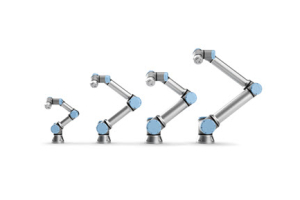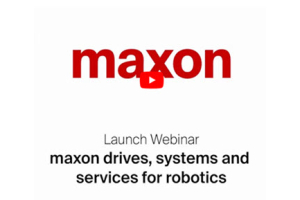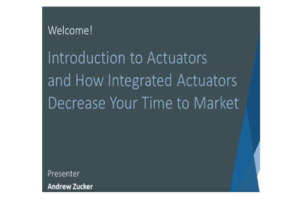When you need to specify a linear actuator, you want to do it right. Some basic decisions come first. Like electric or pneumatic. See Tolomatic’s recent blogpost for an overview of the advantages and disadvantages of pneumatic versus electric linear actuators.
If electric is selected, you’ll next need to decide if a rod or rodless linear actuator is the best choice. Tolomatic offers both types of electric linear actuator, so you can count on us for motion control advice and application expertise.
Selection tips
Here are our tips for specifying the right electric linear actuator for the task.
1. Calculate size for electric, rather than fluid power When using an electric linear  actuator don’t fall into the common fluid power practice of oversizing the cylinder. Pneumatic linear actuators are usually lower cost so a bigger cylinder won’t blow the budget. However, oversizing can be costly when specifying an electric linear actuator since the purchase price may be higher. Take advantage of sizing software offered by manufacturers to get the right size linear actuator for your application.
actuator don’t fall into the common fluid power practice of oversizing the cylinder. Pneumatic linear actuators are usually lower cost so a bigger cylinder won’t blow the budget. However, oversizing can be costly when specifying an electric linear actuator since the purchase price may be higher. Take advantage of sizing software offered by manufacturers to get the right size linear actuator for your application.
2. Calculate loads precisely If you know the weight and size of the load, how far it needs to travel and how fast it needs to move, you can accurately specify actuator components, like screws, bearings and motors. This is critical because if these components can’t handle the stresses of the application, the system may not operate properly. Accurately specified components mean longer service life for the linear actuator.
3. Factor in the duty cycle Duty cycle for a linear actuator is the ratio of operating time to resting time. It’s expressed as a percentage. Accuracy in calculating duty cycle means you can spec the right actuator – one that lasts.
4. Set critical speed limits High speed may be desirable but in screw-driven linear actuators lead screws have critical speed limits. If the screw is required to operate at or beyond the limit, it will oscillate, causing noise and vibration. Long-term effects could be premature wear and even catastrophic failure.
5. Factor in the environment Extreme heat and cold will affect linear actuator  components. Moisture, dust or corrosive agents can cause problems. If a linear actuator is in a washdown environment there are special material and design issues to consider.
components. Moisture, dust or corrosive agents can cause problems. If a linear actuator is in a washdown environment there are special material and design issues to consider.
6. When it comes to the drive system, consider more than footprint Reverse parallel motor mounting has the appeal of saving space, but power transmission through belts or gears may make these configurations less powerful and efficient. Often only an inline motor configuration can deliver the speed and thrust required.
7. Match life expectations with actuator capabilities An electric linear actuator will fail if its drive or carrier bearing system is over-stressed by the load and the speed at which it operates. Simply put, if the application requirements exceed the actuator’s capabilities, it will die an early death. Specify a linear actuator that’s suited to the task or be prepared to replace the actuator early and often.
Special tips for rod actuators
Because an electric rod actuator pushes or pulls a load, there are two special considerations to keep in mind when specifying his type of actuator for an application.
1. Avoid side loading Electric rod actuators are prone to damage and wear when they  have to deal with even moderate side loads. They do not provide much support to a load especially as the rod extends. The weight of the load can actually deflect the rod, causing wear and tear on seals and bearings. This deflection can cause accuracy problems as well. (Just look at the worried fish in the cartoon.)
have to deal with even moderate side loads. They do not provide much support to a load especially as the rod extends. The weight of the load can actually deflect the rod, causing wear and tear on seals and bearings. This deflection can cause accuracy problems as well. (Just look at the worried fish in the cartoon.)
2. Keep total envelope size in mind. There’s a difference between the overall length of an electric actuator and its working stroke length. You’ll have fit problems if you don’t keep both in mind.
Special tips for rodless actuators
A rodless electromechanical linear actuator cariesy loads and is subject to different stresses than its rod-style counterparts. Here are two tips for specifying rodless actuators.
1. Calculate moments (torques) There are three axes to think about. Since rodless electro-mechanical linear actuators carry loads, stresses will be placed on the bearing system for the actuator’s load-carrying platform. You can only specify the right actuator for an application if you’ve calculated roll, yaw and pitch.
2. Mounting makes a difference Mounting is always critical but especially if you need a long-stroke rodless linear actuator. If this is the case, make sure you factor in enough support points to ensure rigidity. Also, make sure the mounting surface is straight and flat and there is room for the actuator and motor combination.
 Tolomatic solutions
Tolomatic solutions
Tolomatic offers a broad selection of both electric rod linear actuators and rodless electro-mechanical actuators. Click on the link below for additional information on Tolomatic’s line of linear actuators.
https://www.electromate.com/products/?partner=1175527175
For more information, please contact:
EDITORIAL CONTACT:
Warren Osak
sales@electromate.com
Toll Free Phone: 877-737-8698
Toll Free Fax: 877-737-8699
www.electromate.com
Tags: Electromate, Tolomatic, Linear Actuator, Electric Linear Actuator, Rodless Cylinder, Rod Style Cylinder





